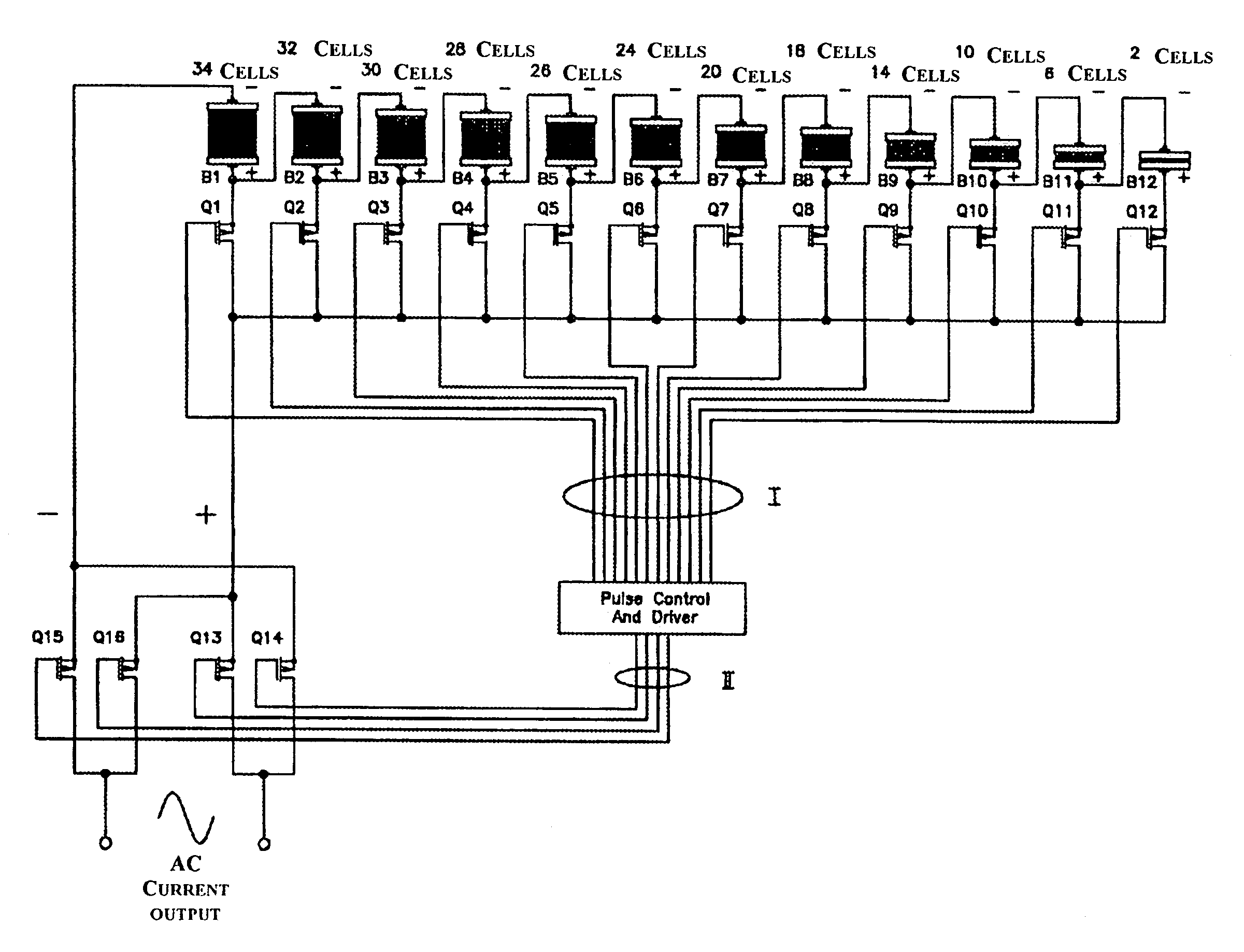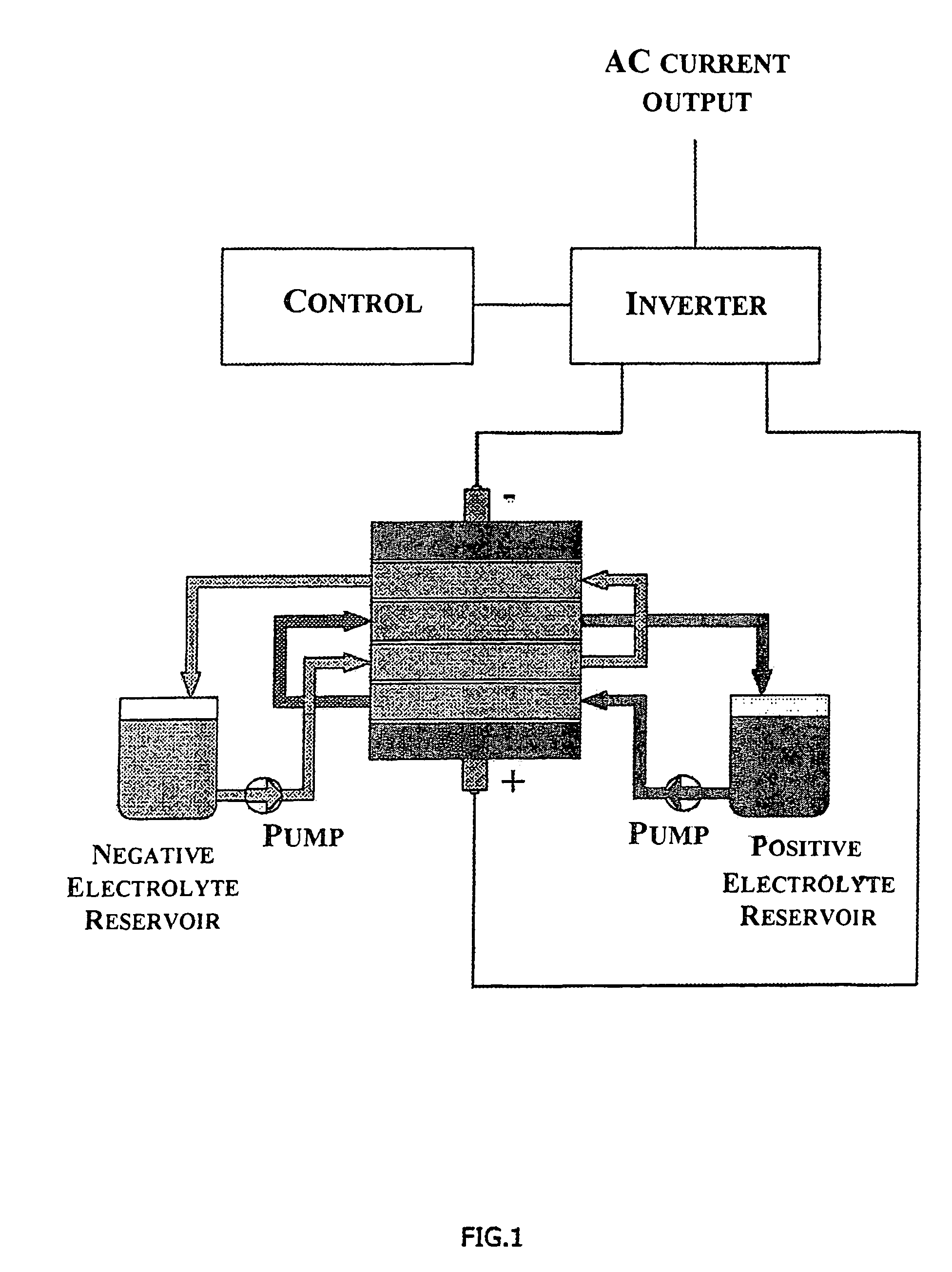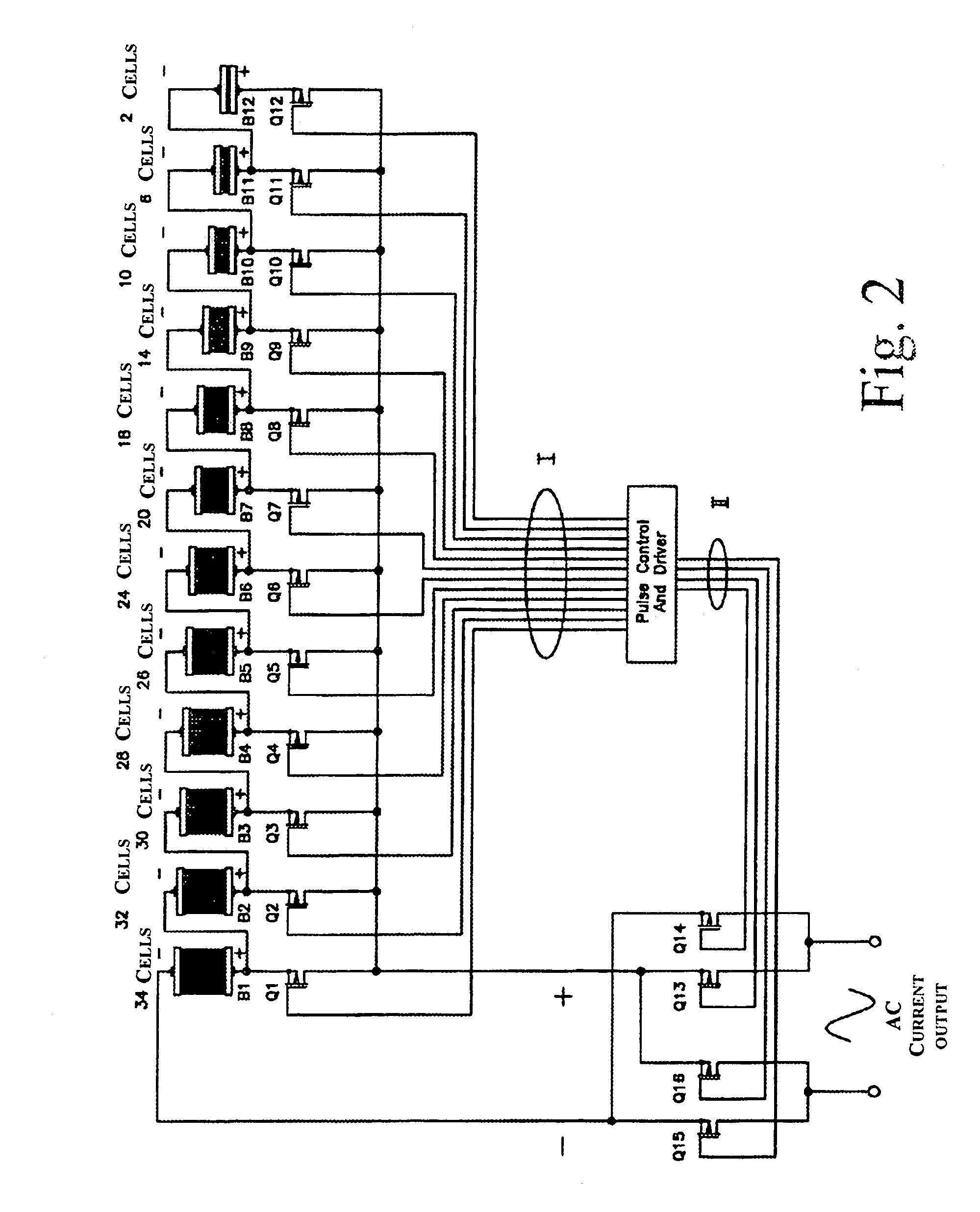Transformerless static voltage inverter for battery systems
a transformerless static voltage and battery technology, which is applied in the direction of power conversion systems, electrical apparatus, dc source parallel operation, etc., can solve the problems of transformer and/or inductors commonly used in transformers to dissipate power, output current becomes null, and the inverter loses power, so as to achieve weight reduction and enhance efficiency
- Summary
- Abstract
- Description
- Claims
- Application Information
AI Technical Summary
Benefits of technology
Problems solved by technology
Method used
Image
Examples
Embodiment Construction
[0058]Referring to FIG. 2, the different intermediate voltage taps of the chain of elementary cells in series are established by employing twelve (N=12) batteries, B1, B2, . . . B11, B12, each composed of a pre-determined number of elementary cells such to be proportionate to, for the considered example, the value of the trigonometric sine function in the first quadrant.
[0059]In the depicted example, the first battery is constituted by 34 cells, the second battery by 32 cells, the third by 30 and so forth to the twelfth cell that is composed by only 2 elementary cells.
[0060]To each intermediate tap of such an electric series of DC current sources of a certain voltage, thus corresponding to a battery voltage that varies according to the trigonometric sine function in the first quadrant (of course the number of cells is proportional to the voltage at the terminals of the respective battery) is associated a power switch Q1, Q2, Q3 . . . Q11 and Q12, connecting each intermediate tap and...
PUM
 Login to View More
Login to View More Abstract
Description
Claims
Application Information
 Login to View More
Login to View More - R&D
- Intellectual Property
- Life Sciences
- Materials
- Tech Scout
- Unparalleled Data Quality
- Higher Quality Content
- 60% Fewer Hallucinations
Browse by: Latest US Patents, China's latest patents, Technical Efficacy Thesaurus, Application Domain, Technology Topic, Popular Technical Reports.
© 2025 PatSnap. All rights reserved.Legal|Privacy policy|Modern Slavery Act Transparency Statement|Sitemap|About US| Contact US: help@patsnap.com



